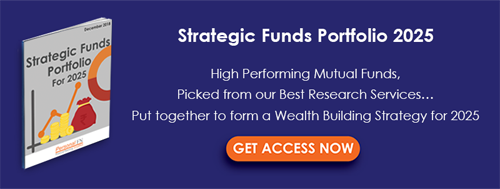 (Image source: Image by Mediamodifier from Pixabay)
(Image source: Image by Mediamodifier from Pixabay)
The latest AMFI data shows that SIP contribution reached its all-time high in the month of July 2019 with net inflows of Rs 8,324 crore.
Total inflows in Equity schemes of mutual fund increased month-on-month (M-o-M) to Rs 8,092 crore. The total number of accounts (folios) as on July 31, 2019 stood at 8.48 crore, while the number of folios under Equity, Hybrid, and Solution Oriented schemes stood at 7.62 crore. This is the 62nd consecutive month witnessing a rise in the number of folios.
The increase, however, was not sudden; SIP inflows have been steadily rising in the past few years. Mutual fund SIPs accounts as on July 31, 2019 stood at 2.78 crore. Mutual funds added 9.54 lakhs SIP accounts on an average each month during the FY2019-20, average SIP size being Rs 3,000 per account.
The July inflow numbers come as a pleasant surprise as the increase was despite a sharp correction in the market during the same month. Stock markets took a succession of hard knocks since the announcement of the Union Budget on July 5, 2019. The hike in surcharge announced in the Budget did not go down well with the FPIs and led to a huge outflow from the markets.
The Budget, however, did announce a number of measures to revive the economy, some of which are as follows:
-
Vision of $5 trillion economy
-
Infrastructure push
-
Funding for Banks and NBFCs
-
Growth push for start-ups
The rise in inflows despite volatility is a positive sign as it points to investors' maturity and trust in the mutual fund industry, specifically through the SIP route. More importantly, it highlights their faith in India's growth story.
Investing during a market downturn can lead to better returns in the long-term. When you invest via SIP, more units are purchased and added to your portfolio when the markets are low, so when the markets bounce back, the rewards are higher.
[Read: Why Bet On High Alpha Funds In This Gloomy Market]
This makes SIP one of the best ways to invest in mutual funds. With SIP, you can customise the portfolio as per your needs. Over the long-term, it has better potential to generate higher returns as compared to other investment avenues.
But investors should remember that they cannot allude SIP to be a safe investment plan. Since it is a market-linked product, the value of your investment may decline over time and hence SIP returns may turn negative. It may also expose you to credit risk if the credit rating of a particular company that the fund has invested in is downgraded by rating agencies.
That said, SIP investments can help you mitigate the risk involved in investing in markets. Additionally, you will benefit from its rupee-cost averaging and wealth compounding feature that helps in wealth creation.
Though it is important that you stick to your investments regardless of the market noise, it is equally important that you select worthy schemes to SIP into. If you select worthy schemes you need not worry about the performance of the scheme during the short-term as it will provide meaningful returns in the long-term.
To select the right scheme, you need to carefully evaluate it based on quantitative and qualitative parameters, and shortlist the one that has consistently performed well across market phases. Selecting unworthy schemes may cause you to deviate from your target and this will impact your financial wellbeing.
Furthermore, it is imperative that the portfolio is strategically structured. To avoid unnecessary risk invest only in schemes that match your risk profile, financial goal, and investment horizon. You can adopt `Core & Satellite' based approach to strategically structure your portfolio and reduce the risk involved.
[Read: Why It Is The Best Time To Build A Strategic Mutual Fund Portfolio To SIP Into]
The term `Core' applies to the more stable, long-term holdings of the portfolio, while the term 'Satellite' applies to the strategic portion that would help push up the overall returns of the portfolio, across market conditions.
The `Core' part can consist of large-cap fund, multi-cap fund, and value style fund and should form 60% of your portfolio holdings. Whereas, the 'Satellite' part of the portfolio (40% of holdings) should include a mid-cap fund, large & mid-cap fund, and an aggressive hybrid fund.
This strategic portfolio lets you focus on the stable schemes with a long-term view and at the same time capitalise on short-term opportunities. Its unique combination helps you generate superior returns without taking excessive risks.
Once you have strategically designed your portfolio, stay invested until your goal is achieved. However, do not forget to review the performance of your portfolio at least once a year. The review will help you determine if you are holding any non-performing funds which need to be replaced.
Editor's note: If you are looking for high rewards with moderate risk, consider PersonalFN's Premium Report, "The Strategic Funds Portfolio For 2025(2019 Edition)".
With this, you gain access to a ready-made portfolio of top recommended equity mutual funds for 2025 based on the Core & Satellite approach to investing you've read about in this article.

If you haven't subscribed yet, do it now!
Add Comments